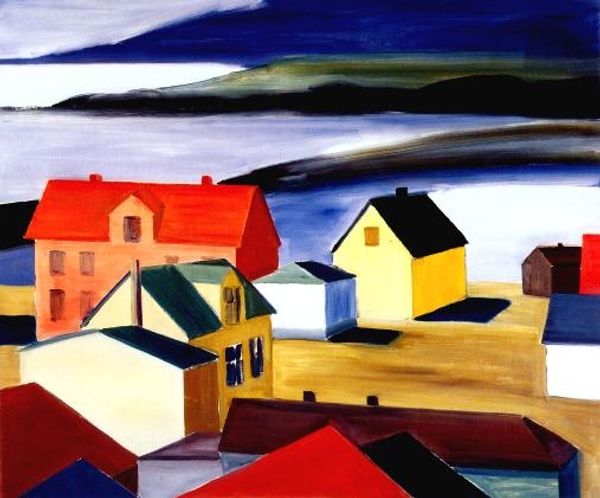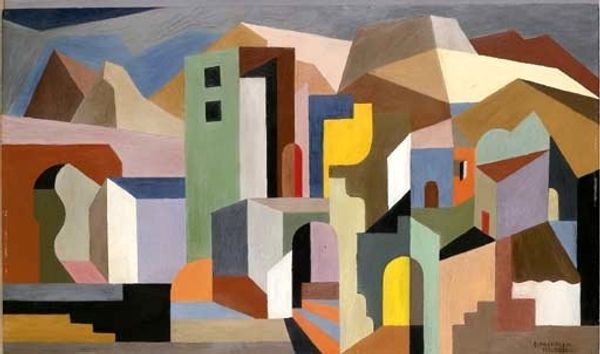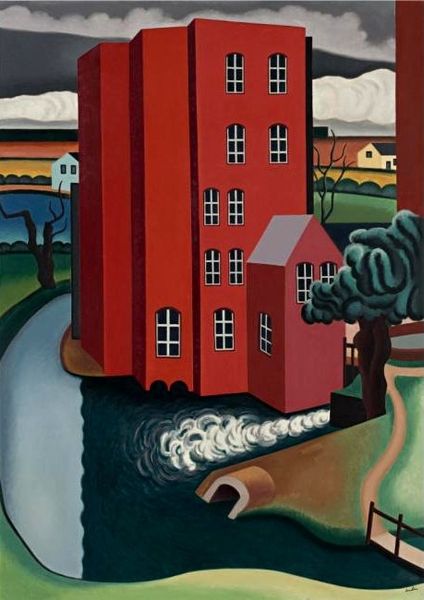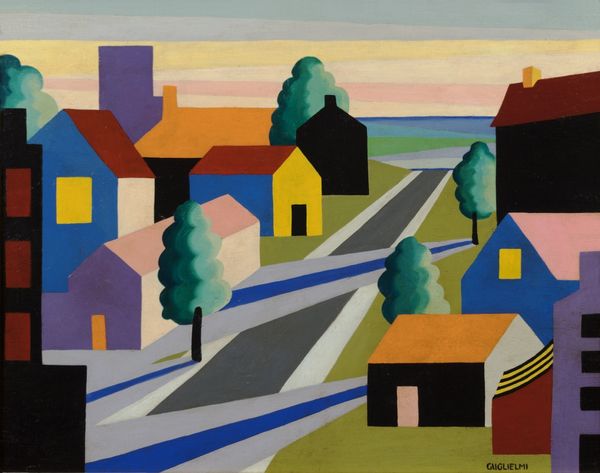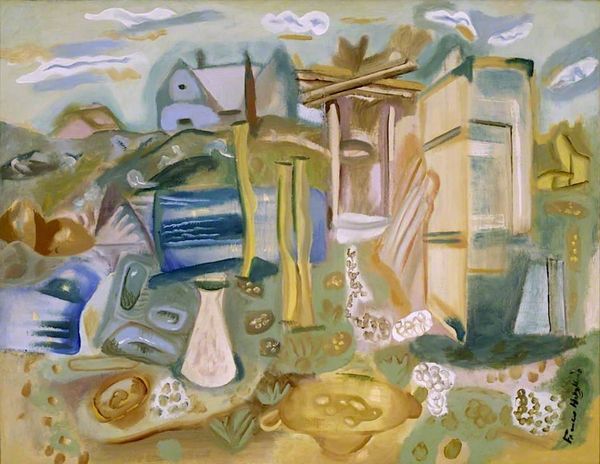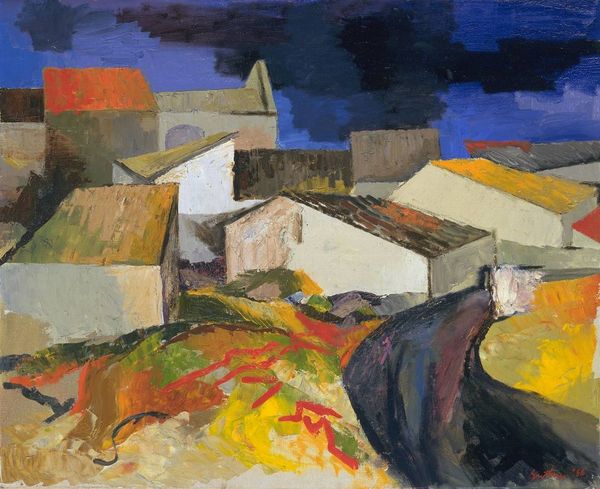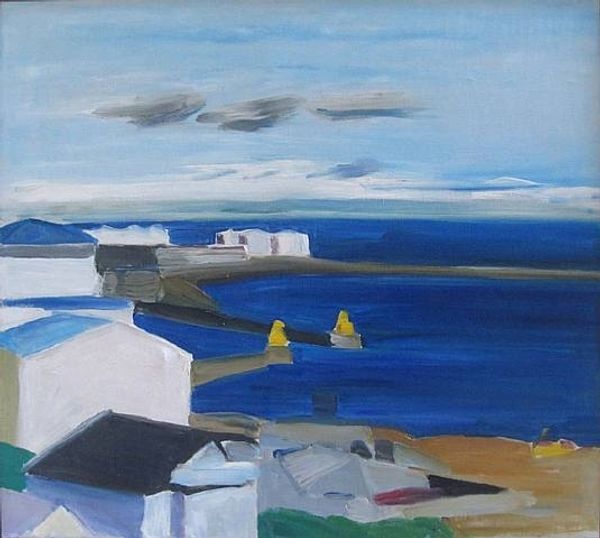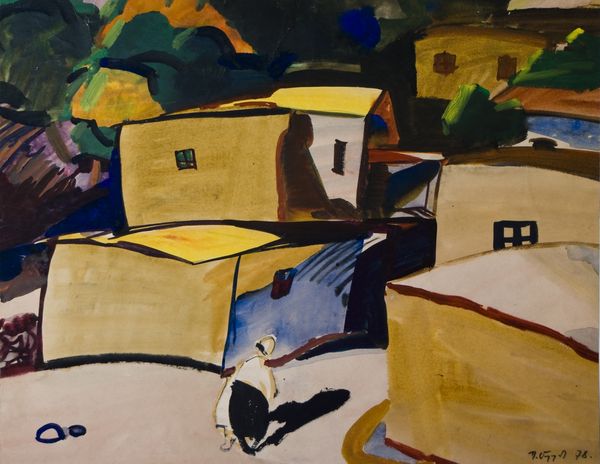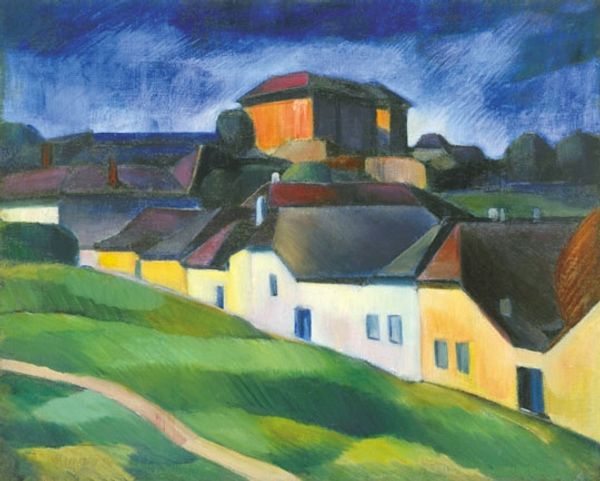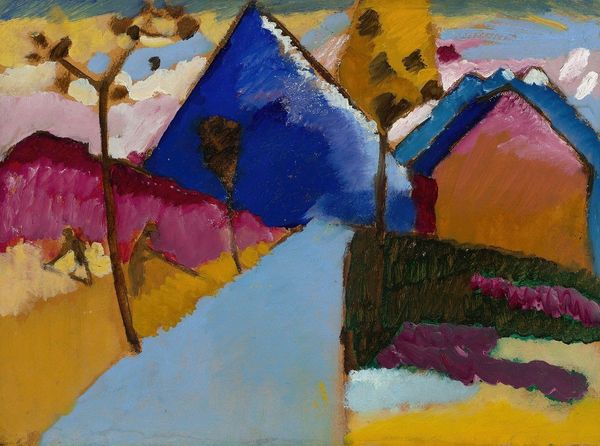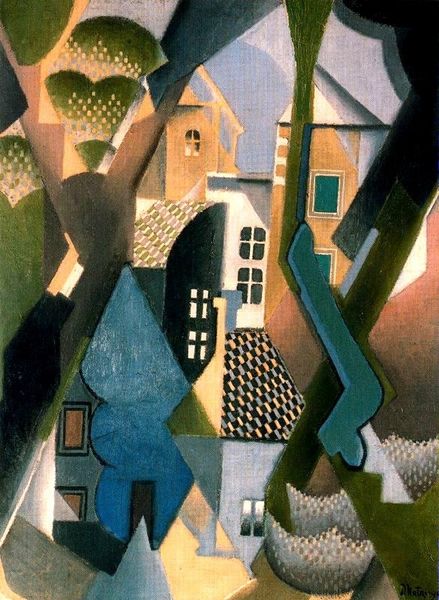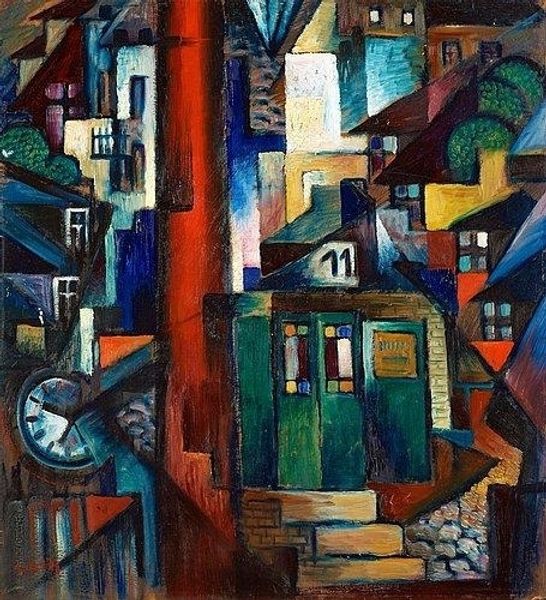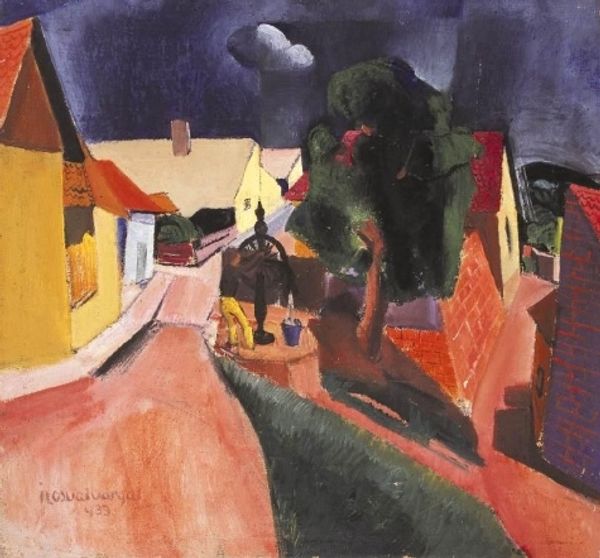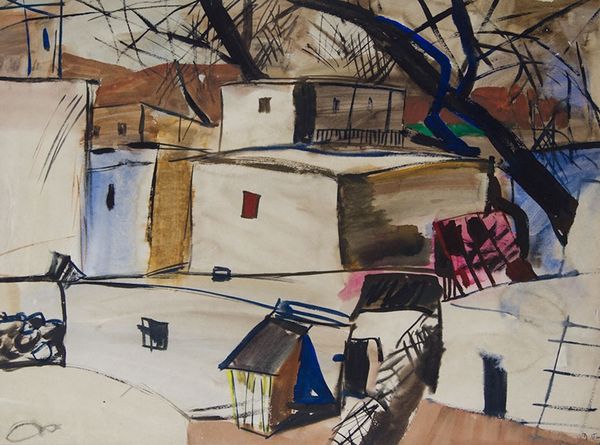
oil-paint
#
oil-paint
#
landscape
#
house
#
oil painting
#
cityscape
#
modernism
Copyright: Louisa Matthiasdottir,Fair Use
Curator: Looking at Louisa Matthiasdottir’s "Icelandic Village," painted in 1991 using oil on canvas, what strikes you first? Editor: There’s something hauntingly serene about it. The almost naive rendering of the buildings, those intense, blocky colours set against the muted ocean tones… it feels simultaneously childlike and melancholic. Like a memory. Curator: Memory feels like the right word. Matthiasdottir emigrated from Iceland to the United States in the 1940s, and her Icelandic roots heavily influenced her practice. These simplified forms and vivid hues recall a primal, archetypal village—almost like a child's idea of home. Editor: Definitely, and it hits harder when considering that. This image is deceptively simple. Each color seems loaded, politically even. The red roof of the white house becomes almost… flag-like? Is she suggesting an echo of national identity being rebuilt on new land? Curator: That’s an interesting reading. Considering Iceland’s history of foreign rule and the subsequent push for independence, red, white, and blue might evoke the complicated negotiation of national identity. Yet I am tempted to interpret those specific shades of colour and geometric houses to something older than that. Perhaps that basic memory of home, an unconscious collection of archetypal forms that are innately human and, regardless of national background, create continuity. Editor: Perhaps. What about her choices concerning perspective and negative space? Curator: Matthiasdottir subverts conventional perspective. Everything seems flattened, presented almost as if it’s on a stage. Notice also how few details she includes. The windows are barely there, reduced to basic shapes; this is what brings up those basic ideas about “home” which transcend any individual place or culture. Editor: It creates a curious tension, right? These abstracted forms invite you closer but simultaneously push you away. There is intimacy mixed with estrangement, like viewing something intensely familiar, but through a blurred lens of diaspora and a longing for home. Curator: Exactly, that push-and-pull feels crucial to understanding the painting. The artist allows us to recognize universal motifs, while questioning and testing us as viewers. Editor: Thinking about these motifs makes it a timeless portrayal of the relationship between identity, memory, and place. I'm left wondering how "home" gets rebuilt within us and is in constant state of construction and memory.
Comments
No comments
Be the first to comment and join the conversation on the ultimate creative platform.
